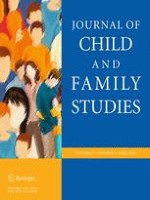28-10-2015 | Original Paper
Juvenile Offending and Crime in Early Adulthood: A Large Sample Analysis
Gepubliceerd in: Journal of Child and Family Studies | Uitgave 4/2016
Log in om toegang te krijgenAbstract
Using large sample archival data from the state of South Carolina’s juvenile justice agency and other state agencies, we examined the background, early experiential and delinquency-related variables predicting young adult (ages 17–30 years) offending among juvenile offenders. We also examined characteristics of juvenile offenders who committed only a single misdemeanor offense, compared to non-juvenile offenders. Finally, we examined the variables that accounted for group differences in persistence of juvenile offending. Early adverse experiences including family-related adversities, mental health problems, identification as having school-related disabilities and juvenile recidivism accounted for more than 20 % of the variance in adult offending. Cox proportional hazards analysis revealed several time-dependent covariates including gender, age at first offense and repeat versus one time offending. Contrary to the view that the one time, misdemeanor level juvenile offending represents only minor departure from normative adolescent behavior, we found that this group of offenders differed significantly from non-delinquents on every category of risk for adult offending and also were more likely than non-delinquents to commit felonies as adults. Finally, in comparing adolescence-limited offenders with life-course persistent offenders, we accounted for more than 50 % of the variance in criminal outcomes on the basis of measures of background, early adversity, psychological characteristics and age of first juvenile arrest or referral.
